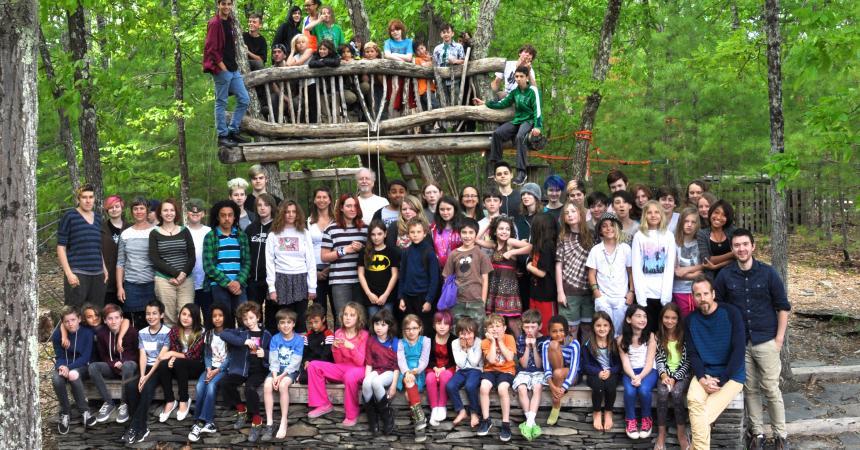The public schools each and every student deserves, now and forever.
Always, always, always.
Rich human interactions is what gives birth to our complex abilities.
So says the World Economic Forum.
Who says that we’ll need those complex abilities to thrive in our new future economics.
Robots will be doing many things that we do today, after all.
And these rich human interactions begin with …
Babies!!!!!
Always, always, always.
No loving adults = feral children, after all.
Fortunately, us adults can still stretch into more complex abilities too.
All of that EXPLORED HERE.
~ ~ ~ ~ ~ ~ ~ ~ ~
And, once again:
All those rich human interactions so vital to life, and for our 2 new economics too:
They be happenin’ in our small and big public schools?
Everyday?
Morning, noon, afternoon?
All the educational reforms of the past 30 years …
… are we there yet?
The answer, from a writer and a teacher:
Probably not.
Or … not quite yet.
The pieces, they falling into place, though.
Here in Canada, traditional grades slowly vanishing, district by district.
No more A+ to struggle to maintain, the B- that’s okay-ish-ly, and that dreaded D-, or worst of all, the F for FAILURE.
And brand-new curriculums downloading to some teachers’ brains, too, for them to work out in their classrooms.
But the big puzzle hasn’t been put together into a clear picture as yet.
The good news, though:
There’s …
… 1 big way to make
rich human interactions
EXPLODE …
… within our public schools.
And … it’s old hat already.
The elementary mixed-aged classroom has been around for a long while now.
Often, that can be a classroom with children who are 5, 6, and 7 years old. For example.
As any parent knows, when children are that young, that 2-3 years difference can make a big … well, difference.
Here, we’re not talking the usual classroom of 20+ students who are only months apart.
Think kids who are developmentally like each other.
Like peas in a pod.

Um, not quite the picture any parent normally has in mind when they think about their children, probably.
In a mixed-aged classroom, however, where children actually stay for 3 years with the same teacher …
… entering the classroom at the age of 5 …
… staying with the same teacher the next year when they are 6 …
… and then the THIRD year when they are finally 7 …
…. several things happen.
And the picture starts to change, too.
Benefit #1: Children are much more able to learn at their own rate.
3 years with the same teacher is a much longer time to learn something than 1 year, after all …
… when children are free to wander throughout the room, and pick which different activity areas to go to, that is.
This means a more relaxed, unhurried atmosphere, reducing stress.
This promotes maximal learning.
Benefit #2: The classroom becomes much more like an extended family, too.
Teachers know their students much better and are much more able to meet their students where they are.
This allows for far more effective scaffolding (support for learning) over time.
The 2nd and 3rd year, the teacher doesn’t have to spend ONE ENTIRE month getting to know their students.
They already know these students from last year.
That speeds up the students’ learning time.
Benefit #3: This “family classroom” dramatically change how students interact with each other.
This develops the complex abilities that our 2 new economics calls for …
… providing the teachers have created the macro-environments to allow these types of interactions to happen, that is.
~ ~ ~ ~ ~ ~ ~ ~ ~
At home, a 5-years-old boy may want to join his older brother in playing an advanced computer game.
So the 7-years-old start showing the younger boy how to play it, a bit at a time.
The 7-years-old has to figure out how to
— slow down and be more patient
— explain complex information clearly
— provide the scaffolding (support) necessary until the younger brother can play on his own and no longer need that support
Whoa! That’s a lot of complex abilities!
In these mixed-aged classrooms, this type of ‘family interaction’ can now happen much more often … with tons and tons and tons of benefits.
The same 7-years-old will be learning the complex abilities that our future call for … without even knowing it!
Mixed-age classrooms allows teachers to avoid the peas-in-a-pod experiences, to have more real-life learning happen.
This is because a big part of this mixed-aged learning involves what psychologist Lev Vygotsky call the “ZONE OF PROXIMAL DEVELOPMENT:”

This zone of proximal development is
- what we can do,
- that we can’t do on our own,
- but that we can do with the right kind of help
Lev Vygotsky says that teachers can help students in this way …
… AND that students can help students in this way, too.
(Likely Vygotsky, who also says that children learn about tools through social interactions, would also say that digital tools can help students in this way too.)
This zone of proximal development is also typically when students typically learn the most and the fastest … when they are intrinsically motivated, that is.
When it comes to this part of the mixed-age learning:
“Older children model
more sophisticated approaches
to problem-solving,
and younger children
are more able to accomplish
tasks they could not do
without the assistance
of older children.
This dynamic increases
the older child’s level of
independence and competence.”
Think a classroom full of little teachers running around …
… with big teachers making sure that nothing goes too seriously wrong.
Again, kind of like extended families.
Other elementary classrooms can have students who are as much as 5 years apart, with, again, important BENEFITS for the children AND for our future economics.
Such as older children gaining leadership abilities as they interact with younger children.
The younger children gaining their own leadership abilities the next year as new younger children come into their classrooms.
~ ~ ~ ~ ~ ~ ~ ~ ~
So … should we care whether our public schools will allow mixed-age play and learning?
Probably.
Because children of different ages used to play together in the street or at each other’s houses.
That zone of proximal development thing?
It happened naturally.
After all, children’s environments were more like villages, running back and forth, roaming the streets, playing street hockey, climbing trees, playing in nature, seeing many things and learning from each other and from the loving adults in their lives.
They were playing with their whole bodies and their whole minds.
Today, children can’t exactly roam the big highways in big cities.
Play on the crowded sidewalks with the roar of heavy traffic of big trucks and cars only meters away.
They no longer have a village to roam in.
They’re more likely to be peas in a pod.
To be much more in organized activities, and being organized by adults, much more of the time.
They miss out on the free play so critical for them to be all that they can be, with their whole bodies and minds.
~ ~ ~ ~ ~ ~ ~ ~ ~
And our 14-years-old GIRL, working away on her 7-minute movie about how trees communicate with each other underground?
She’s going to a school where this mixed-aged approach isn’t happening just in the early elementary years.
Instead, everyone shares the same space, together.
Tiny kids, young children, older children, younger teenager, older teenagers.
3-years-olds, 6-years-olds, 12-years-olds, 15-years-olds and 17-years-olds.
All in the same space.
Shocking, I know.
And, the truth is, it’s far more like this:

It’s more like … yes, again, it’s more like being in a big extended family.
A real-life example of mixed-aged learning: the AGILE LEARNING CENTER in New York City, New York, USA.

Or this:

The kids of the Hudson Valley Sudbury School, where mixed-aged learning happens anywhere and everywhere.
~ ~ ~ ~ ~ ~ ~ ~ ~
And the mixed-aged approach?
It’s part and parcel of the democratic SUDBURY SCHOOL MODEL that’s been around 30+ years now.
Now, this writer (and teacher!) really, really, really like this Sudbury school model (well, 90+% of it, anyway!) ….
…. because it’s for everyone—not just a few handfuls of students.
Anyone can go to a Sudbury school.
And this model’s starting to crawl its myriad ways into public schools, too.
Like this teacher, HARRY NOWELL, who has one foot in a public school and one foot in an independent free-learning school.
And, there’ve long been a few handfuls of SUDBURY SCHOOLS around the world.
These schools tend to be small private schools, though.
Maybe a couple of them are public schools.
And none of them are big public schools.
~ ~ ~ ~ ~ ~ ~ ~ ~
So … should we pop this mixed-aged learning into our big public schools?
All the students of all ages and sizes in the same space?
A 220-student K-8 public school, for example.
No more peas-in-a-pod classrooms.
Instead, all its 220 students sharing the same spaces?
More like the future workplaces that they’ll join when it’s their time?
And, if we should do that …
Is it even realistic to try to do so?
Can the big public schools handle it?
Or is this approach too big for them?
~ ~ ~ ~ ~ ~ ~ ~ ~
The good news: We’re at the tipping point.
It’s already starting, with the usual growing pains—for teachers and administrators, that is.
Kids don’t have any problems with this.
Kids like spending time with younger and older kids, after all.
The bad news: thus far, there are no big mixed-aged schools yet, as in 500-student schools.
Because … well, think of it: 500 students crammed into 1 school.
The wrong kind of chaos can happen too easily, obviously.
We (obviously!) want the good kind of chaos of learning to happen, instead—the kind described in psychologist Carl R. Rogers in his book FREEDOM TO LEARN.
This is a description of an university course if I recall correctly, but it applies to children too.
It’s about being on the edge of the unknown, exploring, playing, writing, drawing, researching, coding, studying, playing one’s way into new discoveries, sometimes by accident.
Imagine trying to create this free environment for 500 students within a public school.
Yikes.
Now throw in the challenges of those schools struggling with poverty, and worse.
Yikes again.
At the same time.
Probably most of us would agree that it can’t be just a few lucky students who get the preferred Sudbury school treatment.
Some parents do opt to teach their own children at home, seeking out digital and physical resources that facilitate their children’s passions.
And this homeschooling trend is growing for many different reasons.
And at the same time, not all parents want to stay home—and nor should they have to.
~ ~ ~ ~ ~ ~ ~ ~ ~
Likely there are many pathways toward the big mixed-aged learning schools.
And it’s probably a lot more simple than it seems to be.
Here’s 1 simple pathway: create a few little schools out of 1 big public school.
So for example.
Let’s tackle a more big school.
If this 1 big public school has 650 students, from Grade 1 to Grade 8.
Then create 5 little schools of 130 students each and nest it in that big school.
Or, try this lens: 5 little AGILE LEARNING CENTERS nested in 1 big school.
The mixed-aged education:
the single best way
for each and every student to
join our new future economies
when it’s their time
—and with joy, too.
Dare we take this leap that’s both new and old as time?



